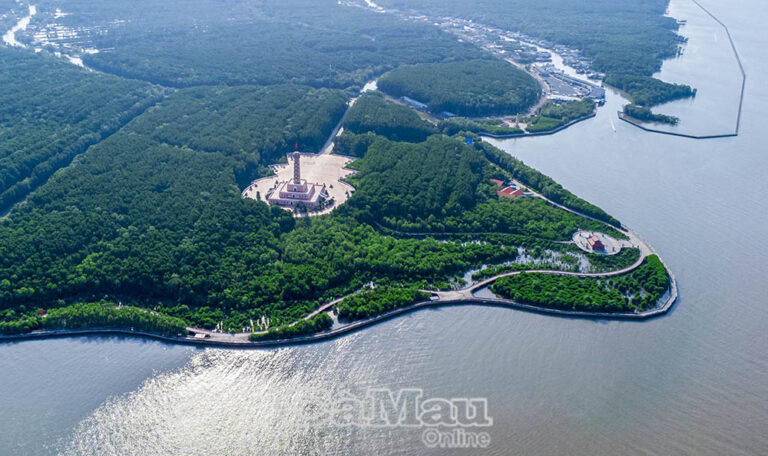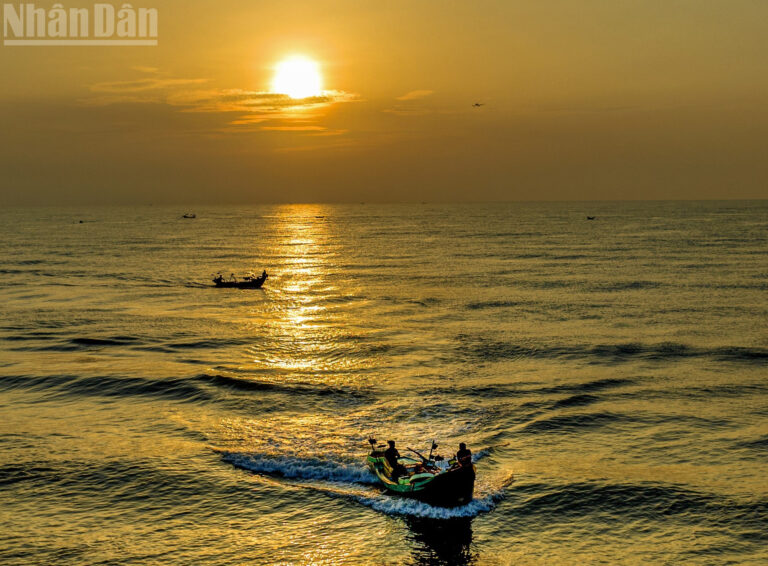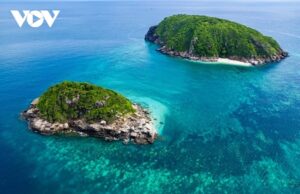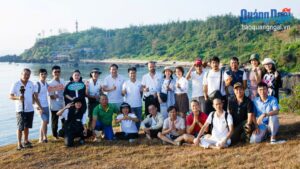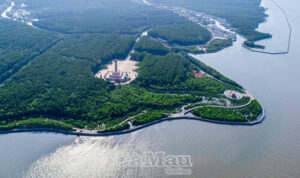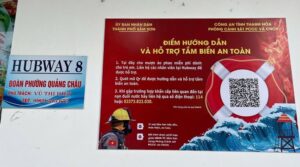Before my trip to Con Cuông District in central Nghệ An Province, I expected something natural and wild, far different from the usual resorts that I visit.
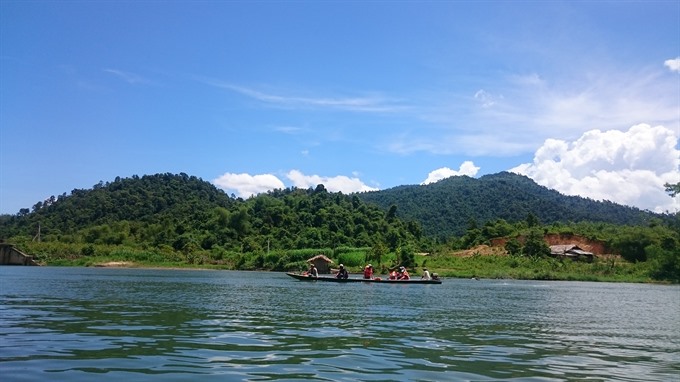
Passengers enjoy a boat trip on the Giăng River. — VNS Photos Hồng Minh
It took more than two hours to drive the 120km from Vinh City to Con Cuông District and then half an hour to drive another 20km to Môn Sơn Commune. The excitement began with a boat trip on the Giăng River inside Pù Mát National Park, one of the richest and most diversified ecosystems in Việt Nam. It really made my day.
For VNĐ1.8 million (US$80), a group of five to seven tourists can make a round trip by boat to Bản Búng Village on the Giăng River. Shorter trips cost as little as VNĐ300,000.
Our journey started at Phà Lài (Flower of the Sky in Thai language) dam in Môn Sơn Commune. We were met by boatmen driving motorised canoes with powerful, noisy engines.
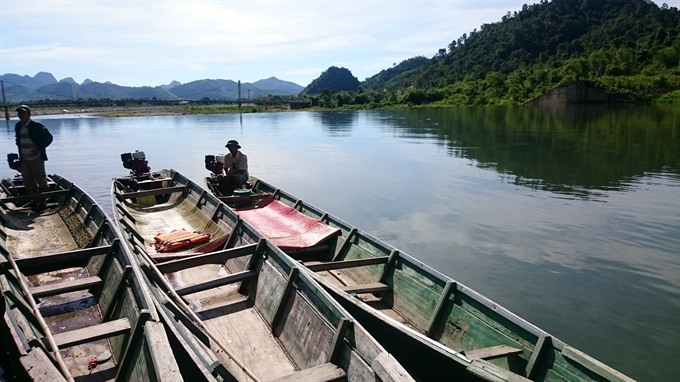
Ready to go: Boatmen wait for passengers on the Giăng River
Thanh, the boatman, reminded us to wear life jackets, saying, “The river is gentle but also very rough in some spots, where it is up to 400-500m wide and 15m deep.”
Thanh sat at the end of the boat with the engine and steering rod. His eyes never left the river, which is pierced by the occasional big rocks. The navigator kept a similar watchout.
About 3km upstream from Phà Lài dam, there is a wild plain with flat stone plates, arranged side by side as if created by human hands. Thanh said that tourists could stop there for swimming and, in some cases, could order BBQ in advance.
We enjoyed the wild beauty of the forest, peaceful stilted houses between the corn fields, green fields on both banks, mountains so high we had to stretch our necks backwards to see their tops and ancient trees on the cliffsides. Occasionally there were rafts floating down the green and quiet river.
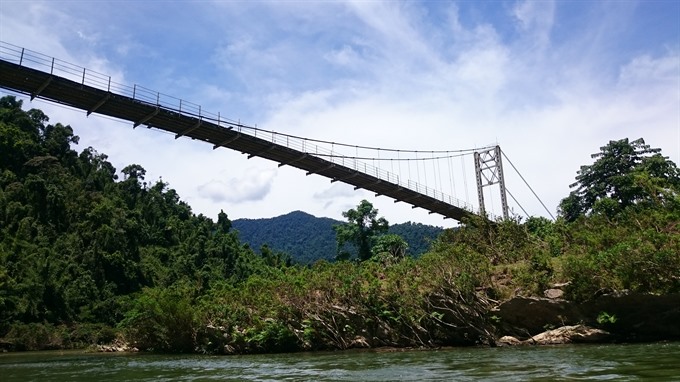
Easy times: A suspension bridge across the Giăng River helps locals move easier
Then came the rough part. As the boat began to enter the twists in the river at the foot of the mountains, we heard water hitting the rocks, causing a fierce roar to overwhelm the noise of the boat engine. The peaceful river suddenly turned into rough with rapids and jagged rocks everywhere.
"Prepare to go upstream!" After shouting to his navigator who steered with a bamboo pole in front of the boat, Thanh quickly flicked the engine to life, pulling the steering rod to the side to direct the boat into the right creek.
The boat hit a big rock and then sped straight into narrow water. Everyone screamed for fear of flipping. We could even see rocks half the size of a table right beneath the boat.
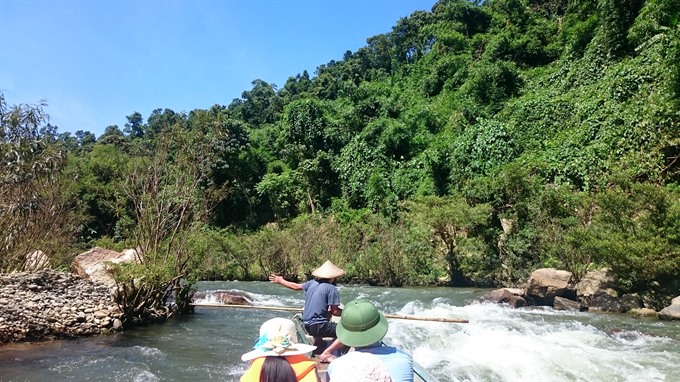
Rocks ahead: A navigator gives signals to rider ahead of rough water.
That was just the first touch of roughness. We experienced at over a dozen rapids, many of which were narrower and shallower. But after getting used to it, many of my boat mates became so excited, cheering when the boat passed a difficult point.
When we reached Cọ area, known for its shallow and rough water, the boat could not move any further with passengers aboard. Thanh took it to the side of the stream to allow us to get off and walk while he and the navigator steered the boat past the rough patch.
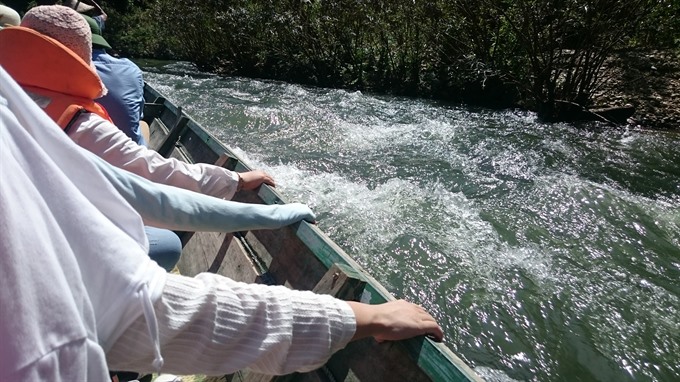
Hold on: Passengers hang on to the boat when passing rough water.
Obviously, riding a boat on the Giăng River is not for the faint hearted.
One of my travel mates said he would definitely return to Giăng River - with his kayak.
Meeting the Đan Lai tribe
After more than two hours heading to the core area of the green national park among the limestone mountains, we arrived at one of the two villages of the Đan Lai tribe, one of the smallest communities in Việt Nam with a total of about 3,000 people scattered across Nghệ An Province.
We were told the interesting story of the Đan Lai tribe. In mythical times, the Đan Lai people lived in the lowlands. They had to escape a cruel landlord who forced them to find golden bamboo trees and a special one-piece ship or the whole people would be killed.
So the people fled as far as they could upstream of the Giăng River to a place they believed no one could find them. This is now the core area of Pù Mát National Park.
In the 1980s, forest rangers found the people and encouraged them to move to the edge of the park. The tribe has strange customs and habits, such as sitting sleeping or soaking infants in streams to see how strong they are. Now such customs are a thing of the past, but the people still keep their wild lifestyle.
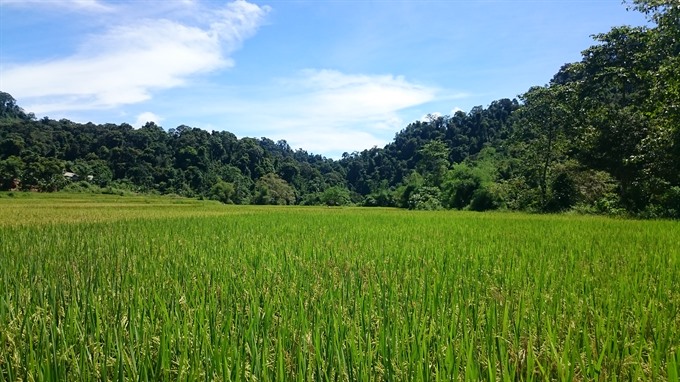
The new crop: A paddy field in Cò Phạt Village grown by Đan Lai people.
On the road entering Cò Phạt Village of Đan Lai people, we saw the green of paddy fields ready for harvest. It was hard to imagine that just a dozen years ago, rice cultivation and eating were not part of the tribe’s knowledge.
In past times, they lived mainly by hunting in the forest, collecting bamboo shoots or catching fish and shrimps in the river. Thanks to the local forest rangers and border guards, they have now learned how to clear land for farming rice and maize, raising chickens, pigs and buffaloes.
We met the Đan Lai children who are now not afraid of strangers like us and watched them having lunch with bare hands.
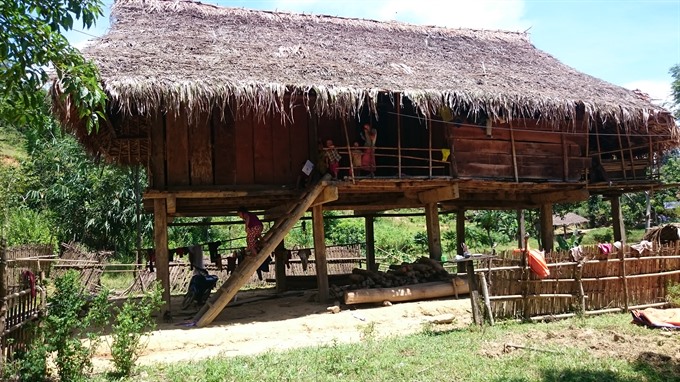
Jungle hide-out: A Đan Lai family in Cò Phạt Village
Tourists who wish to visit the village should register at Khe Khặng Border Guard Station before entering.
The way back to the Phà Lài dam down the stream was much easier and less challenging than the way upstream. But it was a perfect time for me and my boat mates to enjoy a meal full of specialities from the river and the forest, including the mát fish, shrimp and the dớn (fern) vegetables.
The trip was not only natural and wild but also unexpectedly adventurous. Only in Việt Nam! — VNS
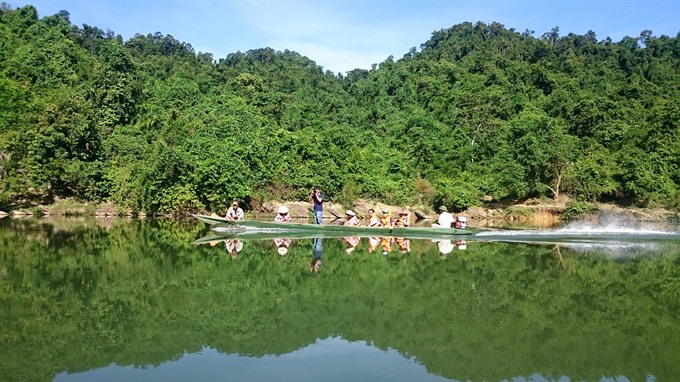
Into the park: Taking a boat on Giăng River through the Pù Mát National Park is very peaceful and scenic.
by Hồng Minh


